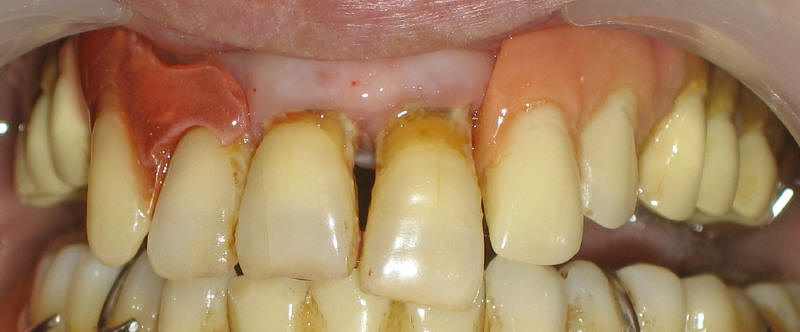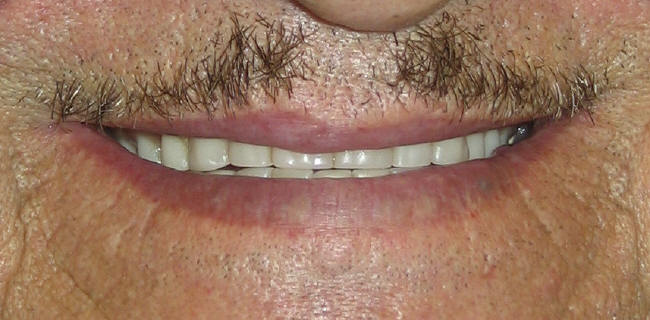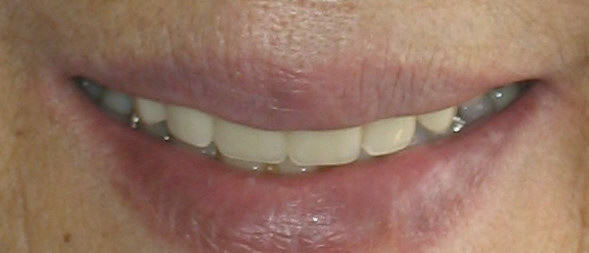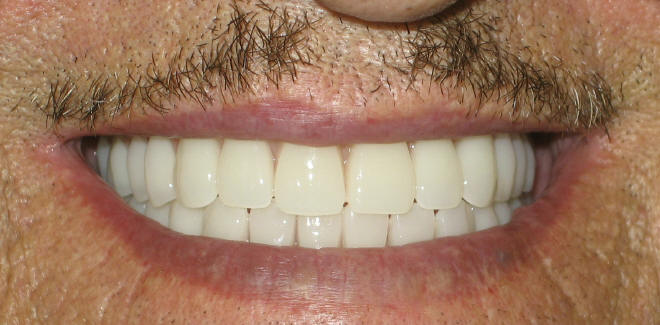



 |
 |
| Fig.1 | Fig3 |
 |
 |
| Fig.2 | Fig.4 |
We talk about partial denture in our last lecture. It is utilized to fix several lost teeth. A partial denture needs a few of remaining natural teeth or at least one for support and stability. When our remaining teeth fail (Fig.1) or are extracted, we need to make a complete denture (Fig.2).
Mrs. Jones has worn this upper partial denture for quite a while (Fig.1). A few more of denture teeth have been added to the existing partial over the years when her teeth became loose. Finally the last three front teeth also want to give up. After discussion, we decide to take them out, convert the partial denture into a temporary complete denture, let the wound heal and gums shrink, and make a permanent complete denture (Fig.2) a few months later.
In fact, there is no permanent denture in dentistry. After a few years of wearing, complete dentures become so worn from outside (Fig.3) and so loose when you chew that we have to make a set of new ones (Fig.4). Our jaw bone undergoes daily dynamic changes. Once the teeth are gone, jaw bone becomes increasingly smaller under your nose (without your notice).
There is strong psychology involving dentures. When these patients come to my office initially, they are reluctant to show you their teeth and denture. You have to drag their lips/cheeks to record pre-existing oral condition (Fig.1), just like that you ask a young girl to be naked in front of you. When you ask them to smile without force (dragging) before treatment, they barely show you teeth (Fig.3). After long planning and hard work, beautiful dentures return from lab. You cannot help being pleased to see these pieces of art work. At the same time, you start to worry. You worry about whether they will fit in patients' mouth or not. The patient may be so impatient that he throws your dear denture to the floor and walks out to the front desk to ask for refund. Fortunately, good planning and hard work as well as anxiety makes your final moment so sweet. When the denture goes into the mouth, more often than not it fits! If not, a few adjustment will make it work. That moment, the denture does not belong to you anymore. What you can get is their smile, small (Fig.2) or big (Fig.4).
What should we do when our last few teeth are in pretty bad shape and we do not have a partial denture? In next lecture, we introduce one of two methods to construct complete denture, including immediate denture.
Return to Implant
Xin Wei, DDS, PhD, MS 1st edition 02/14/2009, last revision 08/07/2016